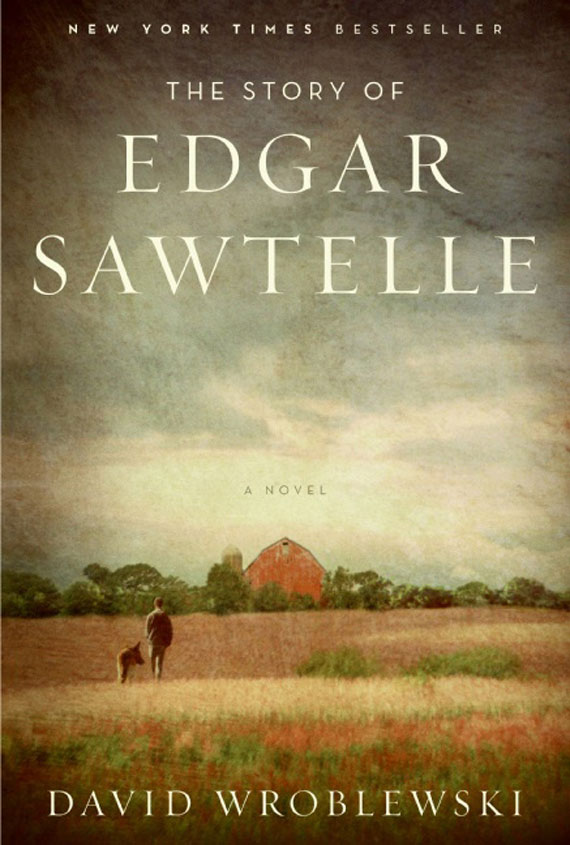In the realm of contemporary literature, few novels resonate with the depth and poignancy showcased in “The Story of Edgar Sawtelle.” This masterful narrative, authored by David Wroblewski, invites readers into a world where language transcends spoken word, emotions intermingle seamlessly with the wilds of nature, and the soulful bond between humans and animals serves as a poignant backdrop. As we delve into this literary tapestry, we unearth various elements that readers can anticipate, from gripping character development to intricate themes that provoke thought and inspire discussion.
At the crux of “The Story of Edgar Sawtelle” lies its protagonist, Edgar himself—a silent boy born into a family of dog breeders in rural Wisconsin. The author intricately weaves Edgar’s unique experience of being unable to speak into the very fabric of the narrative. With deft precision, Wroblewski creates a character who, despite his muteness, communicates profoundly through his actions, gestures, and the compelling relationships he nurtures with the dogs and those surrounding him. This characteristic sets the stage for an exploration of the human condition, highlighting resilience, empathy, and the struggle for connection.
Readers can expect an immersive experience as the author won’t shy away from delving into Edgar’s internal struggles. His silent world is filled with rich, vivid descriptions that transport the audience into the rural landscapes of Wisconsin, where we become acquainted with the Sawtelle family’s dog-breeding business. Wroblewski brilliantly illustrates how Edgar communicates with his canine companions, offering a glimpse into the extraordinary ways non-verbal communication can bridge the chasm that separates us. This dynamic not only emphasizes the bond between Edgar and his beloved dogs but also elicits an emotional response in readers, poignantly capturing the essence of loyalty and companionship.
Another compelling layer of the book is the exploration of familial relationships. The complex interplay between Edgar and his parents, primarily his mother, is pivotal in shaping both Edgar’s personality and the narrative itself. The study of such familial dynamics invites readers to reflect on their own relationships, as Wroblewski meticulously crafts scenes that resonate with authenticity and raw emotion. As Edgar grapples with the impending tragedies that beset his family, the weight of loss and the search for belonging become central themes that will linger in the minds of readers long after the final page is turned.
The novel is replete with symbolic undertones and motifs that enrich the reading experience. One of the most captivating metaphors presented is that of the dogs themselves. The canines, bred for their intuition and extraordinary abilities, serve as a reflection of Edgar’s own journey towards self-discovery. They embody loyalty, trust, and a profound understanding of the emotional landscape of those around them. Wroblewski cleverly uses these creatures to offer philosophical comments on the nature of communication and the myriad ways individuals connect despite barriers. This layer gives the novel a nuanced texture, engaging readers not merely as passive observers but as participants in a deeper exploration of life’s complex interactions.
As the plot unfolds, the story takes an unexpected turn that introduces a sense of suspense and urgency, propelling Edgar into a dramatic quest for truth and resolution. The ethereal quality of Wroblewski’s prose enhances the narrative’s tension, seamlessly weaving elements of mystery and melancholy into the fabric of the storyline. Readers are compelled to navigate the emotional highs and lows alongside Edgar as he confronts adversities that challenge his understanding of loyalty, betrayal, and the profound impact of choices—both his own and those of others.
Moreover, the philosophical reflections within the text provide a rich ground for discussion and analysis. The themes of silence and the human experience prompt readers to ponder the limitations of language while also celebrating alternative modes of expression. The act of listening—whether it’s to the world around us or to our own inner voices—resonates deeply in a society often dominated by noise and distraction. Edgar’s story encourages introspection and a re-evaluation of what it means to communicate and be understood, fostering an intellectual dialogue that extends beyond the pages of the novel.
Visually, the novel is underscored by an evocative setting that draws readers into the pastoral beauty of Wisconsin. The backdrops—lush woods, the family homestead, and the expansive landscapes—are vividly depicted, heightening the sensory experience. Readers are likely to appreciate how the physical environment interacts with the emotional landscape, serving as both a refuge and a battleground for Edgar’s evolving identity.
In conclusion, “The Story of Edgar Sawtelle” is not merely a story; it is a rich exploration of the human experience through the lens of silence, communication, and the bonds we forge with one another. With its engaging character dynamics, profound themes, and beautifully descriptive prose, this novel promises to resonate with a diverse audience. As readers traverse Edgar’s journey with him, they are invited to explore the complexities of life, the significance of connection, and the myriad ways in which we find our voices in a world that can often feel isolating. This compelling narrative is a testament to the indomitable spirit of love and understanding, making it a must-read for anyone seeking a transformative literary experience.
